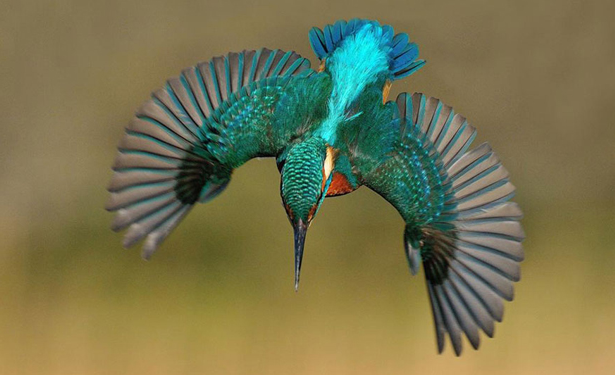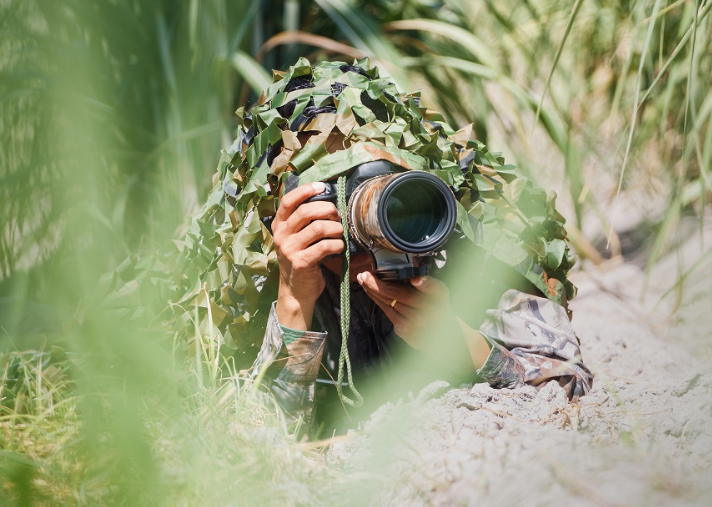|
Getting your Trinity Audio player ready...
|
Wildlife photography requires more than just luck; it requires preparation, patience, and skill. Here are some tips and tricks for taking your wildlife photography to the next level:

Wildlife Photography Requires Research and Preparation
Research the wildlife you plan to photograph and learn about their habits, behavior, and habitat. This knowledge will help you anticipate their movements and plan your shots accordingly. You should also research the best time of day and season to photograph your subject, as well as the location and weather conditions.
Equipment:
Invest in quality equipment, including a camera with a high shutter speed and fast autofocus, a telephoto lens with image stabilization, and a tripod to keep your camera steady. A camera with a fast continuous shooting mode is also beneficial for capturing quick movements.
Patience:
Wildlife photography requires patience and perseverance. You may have to wait for hours or even days to capture the perfect shot. Be prepared to wait quietly and avoid making sudden movements or loud noises that could scare away your subject.
Composition:
Pay attention to composition when framing your shots. Rule of thirds, leading lines, and symmetry are all composition techniques that can add interest and depth to your photographs.
Lighting:
The right lighting can make or break a photograph. The golden hours of early morning and late afternoon provide soft, warm lighting that can enhance your photos. Avoid harsh midday sun and use a flash or reflector to fill in shadows if necessary.
Safety:
Always put your safety and the safety of the wildlife first. Do not approach wild animals too closely, and always be aware of your surroundings. Respect the animals and their environment, and do not disturb or damage their habitat.
Post-Processing:
After capturing your photographs, use post-processing software to enhance and refine your images. Adjusting exposure, contrast, and saturation can bring out details and colors in your photos, while cropping and resizing can help with composition and framing.
Practice:
Practice makes perfect, so keep practicing and experimenting with different techniques and settings. Try different angles, perspectives, and focal lengths to create unique and compelling images.
There’s Plenty of Money To Be Made
Wildlife photography can be a lucrative profession, especially for those who have developed a strong portfolio and reputation in the industry. Wildlife photographers can earn money through a variety of channels, including selling their photographs to publications and websites, licensing their images for commercial use, selling prints and merchandise, and even leading workshops or tours.
Take Your Time
However, it is important to keep in mind that success in wildlife photography is not immediate and requires a lot of hard work, dedication, and patience. Building a strong portfolio, networking with other professionals in the field, and constantly improving your skills are all essential to achieving long-term success and earning big money as a wildlife photographer.
Stay Safe – You’re Still in the Wild
Staying safe as a wildlife photographer is essential. You should always research the animals and areas you plan to photograph, and be aware of any potential dangers. It’s important to respect the wildlife and their habitats and to maintain a safe distance from them. In some cases, it may be necessary to have a guide or professional accompany you to ensure your safety.
Additionally, wearing appropriate clothing and gear, such as long sleeves and pants, sturdy boots, and insect repellent can help protect you from bites, stings, and other hazards. Always prioritize safety above getting the perfect shot.
Keep Within Your Legal Limits
Getting the proper clearance is crucial when it comes to wildlife photography. Depending on the location, you may need permission from local authorities, landowners, or park rangers to photograph wildlife. For example, if you are planning to photograph on private land, you will need to get permission from the landowner before entering.
In national parks, you may need to obtain a permit or pay a fee to take pictures. It’s important to research the area you plan to photograph and determine what permissions and clearances are necessary. Not only will this prevent legal issues, but it will also help ensure that you are photographing ethically and responsibly.
Conclusion
In conclusion, capturing breathtaking wildlife photography requires knowledge, skill, patience, and a passion for the natural world. By following these tips and tricks, you can elevate your wildlife photography game and create stunning images that capture the essence of the creatures and environments you encounter. Remember to always prioritize the safety and well-being of the animals and their habitats, and never compromise that for the sake of a photograph.

